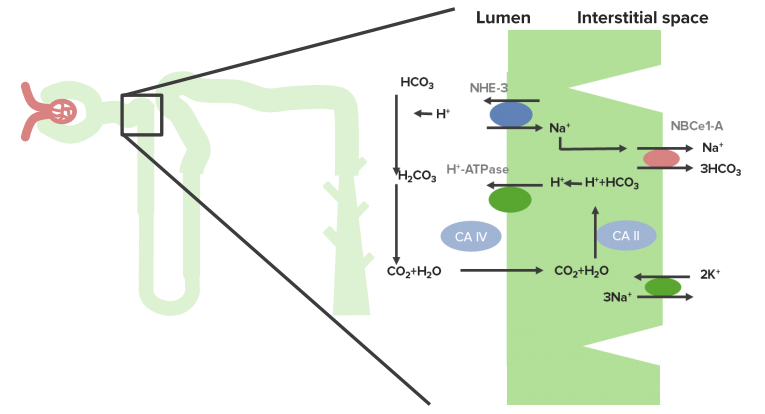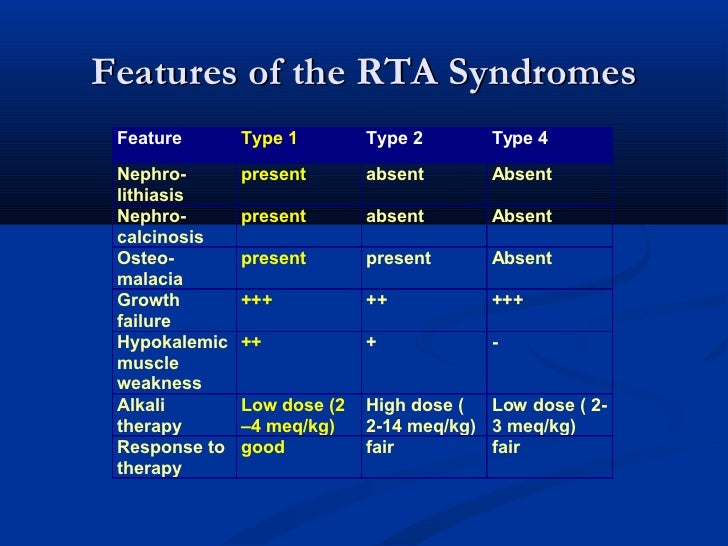

Distal renal tubular acidosis and the potassium enigma. The term renal tubular acidosis (RTA) describes any one of a number of disorders, in which the excretion of fixed acid (distal RTA) or the reabsorption of filtered bicarbonate (proximal RTA) is impaired to a degree that is disproportionate to any existing impairment of the glomerular filtration rate. If hyperkalemic distal RTA is due to mineralocorticoid deficiency, fludrocortisone can be given unless it is contraindicated due to the presence of fluid overload or uncontrolled hypertension.Ĭorrection of the hyperkalemia in hyperkalemic distal RTA often improves both urinary acidification and metabolic acidosis. Carbonic anhydrase II deficiency and carbonic anhydrase inhibitors block intracellular metabolism of bicarbonate and carbonic acid.ĭefining characteristics of hyperkalemic (type IV) distal RTA are clinically significant hyperkalemia and the absence of the normal negative urine anion gap.Īdult patients with RTA are often asymptomatic but may present with muscular weakness related to associated hypokalemia, nephrocalcinosis, or recurrent renal stones.Īlkali therapy is the mainstay of treatment in all forms of RTA. Type III is a combination of proximal and distal RTA. Proximal RTA (type II) occurs most often as a component of Fanconi syndrome, which is characterized by generalized dysfunction of the proximal tubule, with the resultant urinary loss of bicarbonate, calcium, phosphate, urate, amino acids, glucose, and other organic acids and bases. Urine pH is also low in hyperkalemic distal RTA. The urine pH exceeds 5.5 in classic distal RTA, but is less than 5.0 in patients with untreated proximal RTA. Inherited (primary) classic distal RTA (type I) most often results from mutations of the genes for the renal apical membrane H-ATPase proton pump or the basolateral membrane anion exchanger AE1 gene. Duplication for commercial use must be authorized in writing by ADAM Health Solutions.Patients with renal tubular acidosis (RTA) have a low arterial pH and low serum bicarbonate with hyperchloremia and a normal serum anion gap. Links to other sites are provided for information only - they do not constitute endorsements of those other sites. A licensed physician should be consulted for diagnosis and treatment of any and all medical conditions. The information provided herein should not be used during any medical emergency or for the diagnosis or treatment of any medical condition. This site complies with the HONcode standard for trustworthy health information: verify here. Learn more about A.D.A.M.'s editorial policy editorial process and privacy policy. is among the first to achieve this important distinction for online health information and services. follows rigorous standards of quality and accountability. is accredited by URAC, for Health Content Provider (URAC's accreditation program is an independent audit to verify that A.D.A.M.




 0 kommentar(er)
0 kommentar(er)
